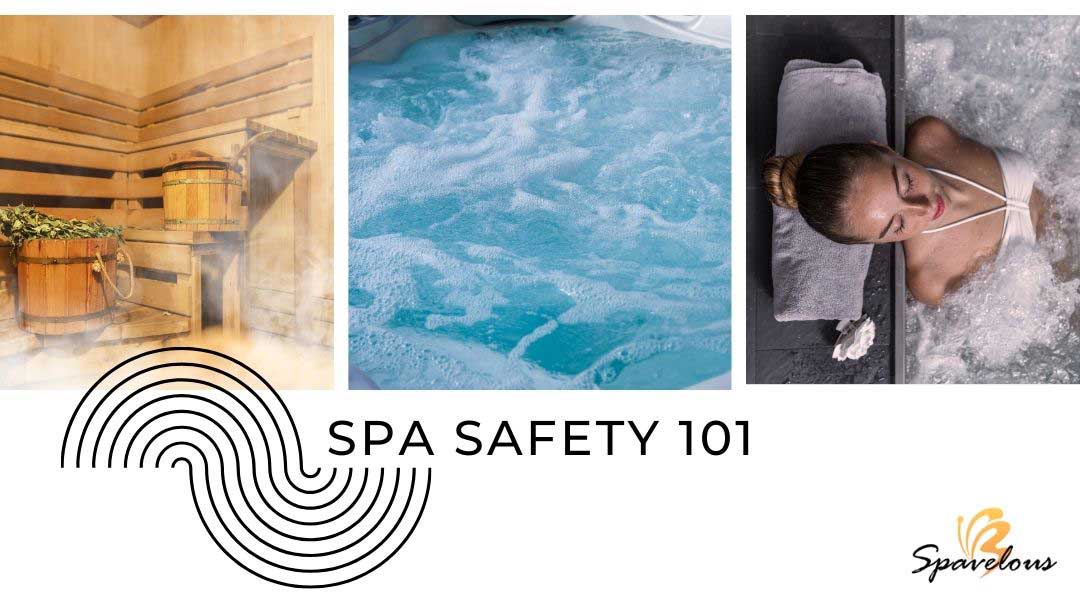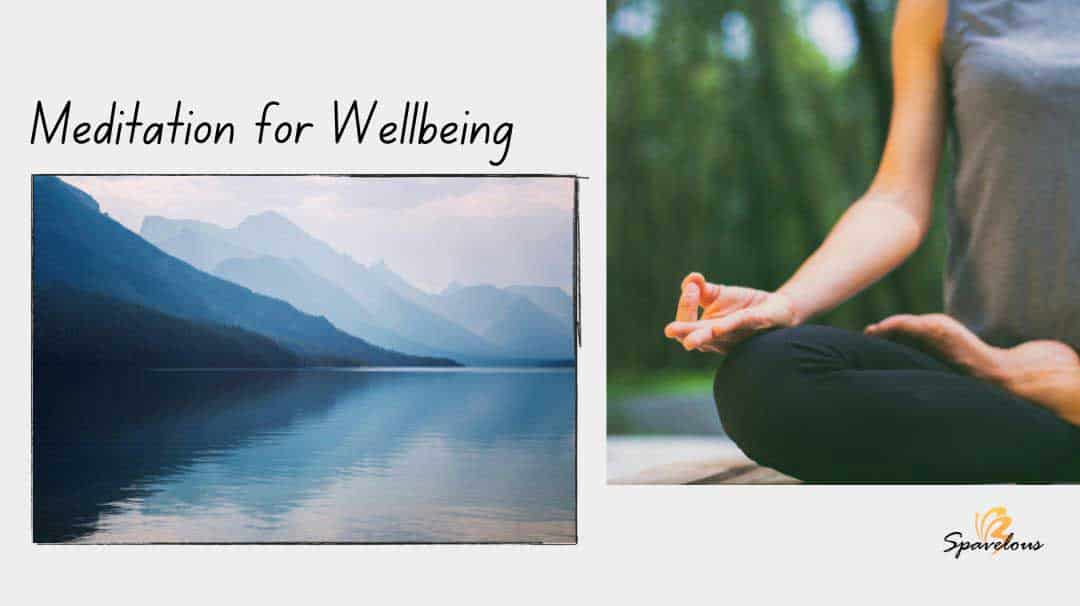🚨 Attention Spa Lovers! 🚨
🤔 Did you know your favorite spa treatments might have hidden risks? 😱
🌡️ From saunas’ intense heat to hydrotherapy’s powerful jets, there’s more to consider than just relaxation! 💆♀️💆♂️
In this ULTIMATE guide, we’ll: 🔍 Uncover the potential hazards lurking in saunas, steam rooms, hot tubs, and hydrotherapy 🌡️ Teach you how to spot and avoid risks like dehydration, overheating, and waterborne illnesses 📝 Share essential safety tips for a worry-free spa experience
Whether you’re a spa regular or planning your first visit, this article is a MUST-READ! 📚
Get ready to: 😎 Navigate the world of spa treatments with confidence 🙌 Maximize your wellness journey while staying safe 🧘♀️🧘♂️ Enjoy a truly relaxing and rejuvenating spa day
Don’t miss out on these game-changing spa safety secrets! 🔒🗝️
Read on to uncover the keys to a blissful, risk-free spa experience! 🌈🔑
Spa Safety Essentials:
Understanding the Risks of Saunas, Steam Rooms, Hot Tubs, & Hydrotherapy
When we think of spas, we often associate them with relaxation, rejuvenation, and self-care. From soothing saunas to invigorating hydrotherapy sessions, these wellness havens offer a multitude of amenities to help us unwind and escape the stresses of daily life.
But have you ever wondered if hidden dangers might lurk within the tranquil walls of your favorite spa? Are saunas, steam rooms, hot tubs, and hydrotherapy treatments as safe as they seem? Let’s dig deeper to uncover the potential risks associated with these popular spa features and explore essential safety tips for a worry-free experience.
Key Takeaways:
- Understanding the risks of saunas, steam rooms, jacuzzis, and hydrotherapy is crucial for ensuring a safe spa experience.
- Dehydration and overheating are common concerns in saunas, while respiratory issues and the spread of germs can be risks in steam rooms.
- Jacuzzis and hot tubs pose the threat of waterborne illnesses, drowning, and slips/falls, whereas forceful jets in hydrotherapy require caution.
- General spa safety tips, including staying hydrated, observing time limits, and listening to your body, can enhance your overall well-being and minimize potential risks.
Introduction
This introductory section will provide an overview of spa safety and the potential risks involved in using saunas, steam rooms, jacuzzis, and hydrotherapy. Prioritizing safety and taking precautionary measures when engaging in spa activities is essential to ensure a positive and secure experience.
Sauna-Specific Risks
Saunas are an excellent way to relax and detoxify the body, but it’s important to be aware of the specific risks associated with sauna use. Individuals can take appropriate measures to ensure a safe sauna experience by understanding these risks.
Dehydration
One of the primary risks of sauna use is dehydration. The high heat in saunas can cause excessive sweating, leading to bodily fluid loss. It is essential to stay hydrated by drinking plenty of water before, during, and after sauna sessions. Dehydration can result in symptoms such as dizziness, fatigue, and decreased cognitive function.
Overheating
Another risk of saunas is overheating. Spending too much time in a sauna or opting for excessively high temperatures can put a strain on the body and lead to overheating. It is crucial to follow recommended time limits and avoid pushing the body beyond its limits. Overheating can result in symptoms such as nausea, lightheadedness, and fainting.
Existing Health Conditions
Individuals with pre-existing health conditions need to be particularly cautious when using saunas. Certain conditions, such as heart disease, low blood pressure, or respiratory problems, can be exacerbated by saunas’ high temperatures and intense heat. If you have any existing health conditions, consult with a healthcare professional before using saunas to assess the suitability and safety of sauna use.
| Risks | Precautions |
|---|---|
| Dehydration | – Drink plenty of water before, during, and after sauna sessions. – Monitor your body’s hydration levels and drink more fluids if needed. – Avoid alcohol and caffeine, as they can contribute to dehydration. |
| Overheating | – Follow recommended time limits for sauna use. – Choose moderate temperatures that are comfortable for you. – Listen to your body’s signals and exit the sauna if you start feeling unwell. |
| Existing Health Conditions | – Consult with a healthcare professional before using saunas. – Follow any specific recommendations or restrictions provided by your healthcare provider. – Monitor your symptoms closely during sauna sessions and exit if you experience any discomfort. |
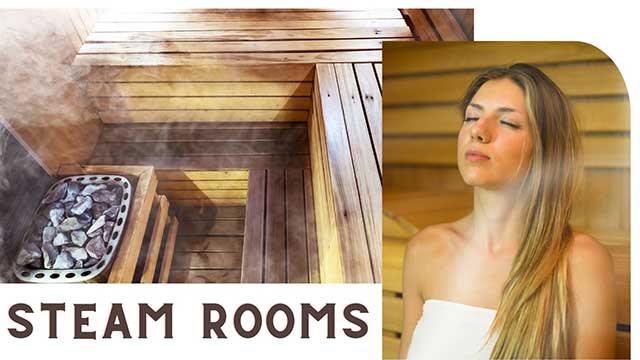
Steam Room Concerns
When using a steam room, it is important to be aware of potential risks and take necessary precautions to ensure a safe and enjoyable experience. This section will discuss three significant concerns associated with steam rooms: respiratory issues, skin burns, and the spread of germs.
Respiratory Issues
Steam rooms create a humid environment that can impact respiratory health. The intense heat and high humidity levels can cause breathing difficulties for individuals with pre-existing respiratory conditions such as asthma or COPD. The hot steam can irritate the airways and trigger symptoms like coughing, wheezing, and shortness of breath.
It is crucial to listen to your body and exit the steam room if you experience any respiratory distress. If you have known respiratory issues, it is advisable to consult with your healthcare provider before using a steam room to determine whether it is suitable for you.
Skin Burns
The hot steam in steam rooms can cause skin burns if proper caution is not taken. The steam and the surfaces inside the steam room can reach extremely high temperatures, which can lead to burns on unprotected skin. This is especially true for sensitive areas like the face, where the skin is more delicate.
To avoid skin burns, following the facility’s safety guidelines is essential. Sit or lie on a towel to create a barrier between your skin and the hot surfaces. Additionally, it is crucial not to touch the steam vents or any hot surfaces directly.
Spread of Germs
Steam rooms can create an environment that promotes the spread of germs, including bacteria and viruses. The warm and humid conditions in steam rooms provide an ideal breeding ground for microorganisms.
Practicing good hygiene habits while using steam rooms is essential to minimize the risk of infections. Prioritize regular handwashing before and after using the steam room. Avoid touching your face, especially the eyes, nose, and mouth, while in the steam room. Additionally, using a clean towel or personal mat to sit or lie on is advisable to avoid direct contact with potentially contaminated surfaces.
Steam Room Concerns Summary
Steam rooms offer a relaxing and invigorating experience, but being aware of the potential risks and safety measures is crucial. Respiratory issues, skin burns, and the spread of germs are significant concerns in steam rooms. By taking necessary precautions such as consulting with a healthcare provider, protecting the skin with towels or mats, and practicing good hygiene, individuals can enjoy the benefits of steam rooms while minimizing the associated risks.
| Concern | Precautions |
|---|---|
| Respiratory Issues | – Consult with a healthcare provider if you have pre-existing respiratory conditions – Exit the steam room if experiencing breathing difficulties |
| Skin Burns | – Sit or lie on a towel to create a protective barrier – Avoid touching hot surfaces directly |
| Spread of Germs | – Practice regular handwashing – Avoid touching the face – Use a clean towel or personal mat |
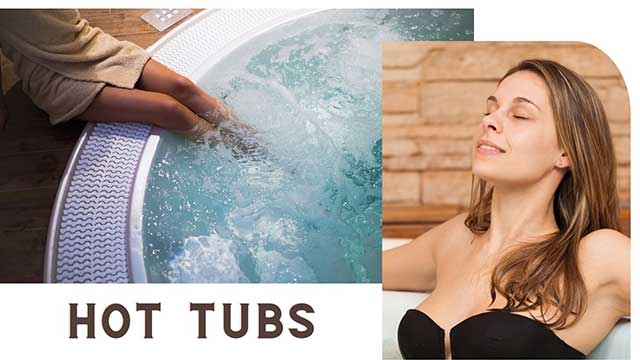
Jacuzzi / Hot Tub Cautions
Jacuzzis and hot tubs are popular spa features, but it’s important to be aware of the potential risks associated with their use. By understanding the precautions to take, you can ensure a safe and enjoyable experience while enjoying these amenities.
Waterborne Illnesses
One of the main concerns when using jacuzzis or hot tubs is the risk of waterborne illnesses. These can be caused by bacteria, viruses, or other pathogens that thrive in warm water environments. Maintaining proper water hygiene and regularly sanitizing the jacuzzi or hot tub is crucial to prevent the growth and spread of these harmful microorganisms. Following the manufacturer’s instructions for water treatment and ensuring the water quality is regularly tested can help minimize the risk of waterborne illnesses.
Drowning Risk
Another important consideration when using jacuzzis or hot tubs is the potential risk of drowning, especially for children or individuals who may have difficulty swimming. It’s essential to never leave children unattended in a jacuzzi or hot tub and to establish clear safety rules, such as no diving or running near the water. Installing a secure cover or fence around the jacuzzi or hot tub area can also help prevent accidental falls into the water. Additionally, learning basic water rescue techniques and having a rescue device readily available can make a difference in emergency situations.
Slips and Falls
Slips and falls are common accidents that can occur in jacuzzis or hot tubs, as the surfaces are often wet and slippery. To minimize the risk of such accidents, taking precautions such as installing slip-resistant mats or flooring around the jacuzzi or hot tub area is important. Using handrails or grab bars when entering or exiting the water can also provide additional support and stability. Additionally, it’s crucial to avoid any rough play or horseplay that may result in someone losing their balance and getting injured. By being mindful of your surroundings and taking necessary precautions, you can reduce the risk of slips and falls in jacuzzis or hot tubs.
| Risks | Precautions | Benefits |
|---|---|---|
| Waterborne Illnesses | – Regularly sanitize the water – Maintain proper water hygiene – Test water quality regularly |
– Enjoy a clean and safe spa experience |
| Drowning Risk | – Never leave children unattended – Establish safety rules – Install a secure cover or fence |
– Ensure the safety of yourself and others |
| Slips and Falls | – Install slip-resistant mats or flooring – Use handrails or grab bars – Avoid rough play or horseplay |
– Prevent accidents and injuries |
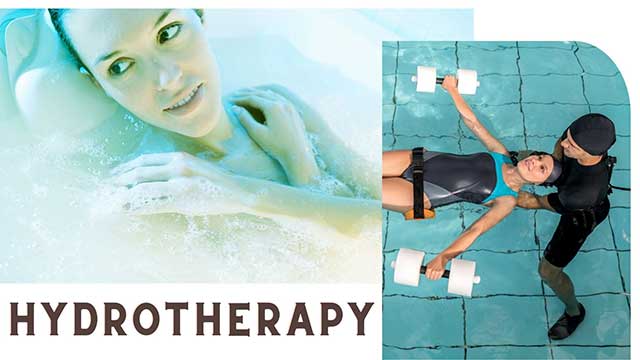
Hydrotherapy Considerations
When it comes to hydrotherapy, it’s essential to understand and consider the potential risks involved. Hydrotherapy, which involves using water for therapeutic purposes, is a popular spa treatment known for its relaxation and healing benefits. However, you must be aware of certain factors to ensure your safety and well-being during hydrotherapy sessions.
Forceful Jets
One key element of hydrotherapy is the use of forceful jets, which provide targeted water pressure to specific areas of the body. While these jets can offer a stimulating and invigorating experience, it’s important to use caution. The forceful jets can exert significant pressure on the body, potentially causing discomfort or injury if not properly used. It’s crucial to adjust the intensity of the jets according to your comfort level and avoid positioning them directly on sensitive areas or directly against the skin.
Medical Conditions
Individuals with certain medical conditions should exercise caution when considering hydrotherapy. Some conditions, such as cardiovascular issues, respiratory disorders, or skin conditions, may be adversely affected by hydrotherapy’s intense water pressure or high water temperatures. If you have any underlying medical conditions, it’s always advisable to consult with a healthcare professional before participating in hydrotherapy to ensure its safety.
By understanding the potential risks of forceful jets in hydrotherapy and the implications for individuals with specific medical conditions, you can make informed decisions about your participation in hydrotherapy sessions. Prioritizing your safety and considering these factors will help you enjoy the benefits of hydrotherapy while minimizing any potential risks.
General Spa Safety Tips
Safety should always be a top priority when enjoying a spa experience. Following these general spa safety tips can ensure a safe and enjoyable time at the spa.
Stay Hydrated
One of the most important spa safety tips is to stay hydrated throughout your spa session. In the warm and humid spa environment, it’s easy to become dehydrated. Remember to drink plenty of water before, during, and after your spa activities to keep your body hydrated and prevent overheating.
Observe Time Limits
While relaxation is the goal of a spa visit, it’s crucial to be mindful of time limits in various spa amenities. Spending too much time in hot tubs, saunas, or steam rooms can put a strain on your body and increase the risk of dehydration, overheating, and other health issues. Pay attention to recommended time limits and listen to your body when it tells you it’s time to take a break.
Listen to Your Body
Your body knows best when it comes to its limits. Pay close attention to any discomfort or signs of overexertion during your spa activities. If you feel lightheaded, dizzy, or experience any pain, it’s essential to listen to your body and take a break. Pushing through discomfort can lead to injuries or health complications.
Shower Before and After
Before entering any spa amenities, such as pools, hot tubs, or saunas, make sure to shower thoroughly. Pre-spa showers help remove any oils, lotions, or cosmetics from your body, ensuring a clean and hygienic spa experience. After your spa session, take another shower to remove any residue or chemicals that may have accumulated on your skin.
Don’t Go Alone (If Possible)
While spas can be relaxing and rejuvenating, having a companion with you is always safer. Bring a friend or family member along for your spa visit if possible. Having someone by your side can provide an extra level of safety and support in case of any emergencies or accidents that may occur.
These general safety tips can maximize your spa experience while minimizing potential risks. Safety should always be a priority, so take care of yourself and enjoy your spa visit to the fullest!
Conclusion
In conclusion, it is crucial to prioritize spa safety when enjoying the various amenities offered, such as saunas, steam rooms, jacuzzis, and hydrotherapy. Throughout this article, we have discussed the specific risks associated with each of these spa features, including dehydration and overheating in saunas, respiratory issues and the spread of germs in steam rooms, waterborne illnesses and the risk of slips and falls in jacuzzis, and the forceful jets and implications for individuals with medical conditions in hydrotherapy.
By understanding these risks and taking necessary precautions, individuals can fully appreciate the benefits of spa relaxation while minimizing the chance of adverse effects. Staying hydrated, observing time limits, listening to your body’s signals, showering before and after spa sessions, and, if possible, having a companion for enhanced safety are all important safety tips to remember.
Remember, spa safety is paramount to ensure a secure and enjoyable experience. By being well-informed and following the provided safety guidelines, you can make the most of your spa visits and maintain your health and well-being. So go ahead and indulge in the soothing and rejuvenating world of spas with confidence and peace of mind, knowing that you are taking the necessary steps to protect yourself.
Inspirational Sources:
Did you enjoy this article? If so, I’d love for you to join our growing community of beauty and health enthusiasts! Simply enter your email below to subscribe to our weekly newsletter. You’ll receive the latest trends, tips, and insights to help elevate your wellbeing, along with exclusive content, personalized recommendations, and special offers delivered straight to your inbox. It’s my way of continuing to spread positivity and self-care into this world. I can’t wait for you to be a part of this radiant journey!
Recommended Reads:
Quick Digest Quick Digest × Alright, my friends, get ready to say goodbye to stress and hello to pure bliss! This article …
Quick Digest Quick Digest × 🚨 Attention Stressed-Out Souls! 🚨 😱 Did you know stress could be stealing precious years from your …
More Than Just A Grocery List For Weight Loss Are you ready to revamp your grocery list and support your weight loss …
Quick Digest Quick Digest × Unlock Your Natural Radiance: The Ultimate Guide to Nourishing Your Skin and Nails from Within Are you …

